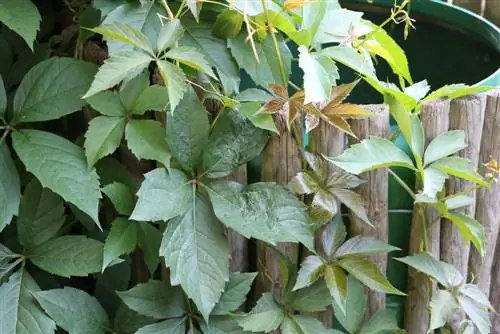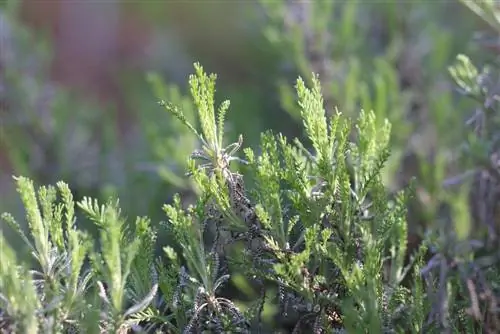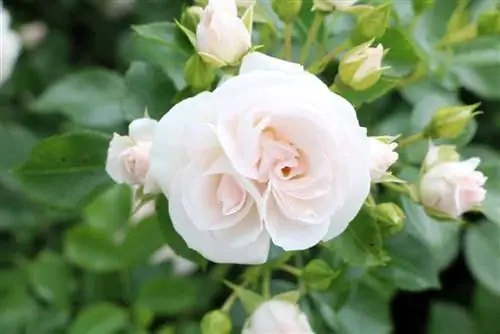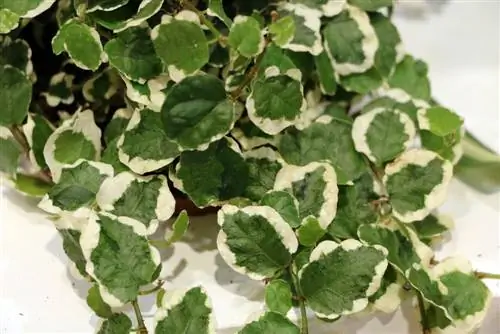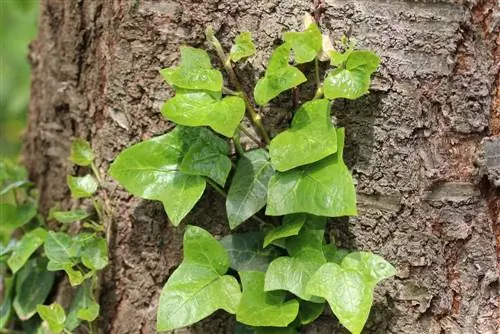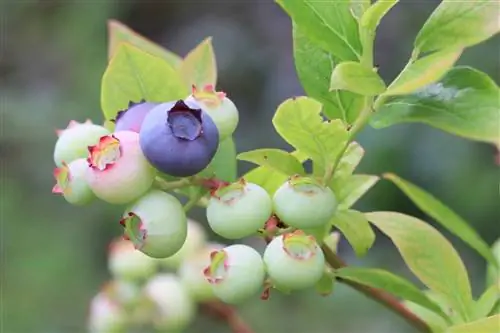- Author admin [email protected].
- Public 2023-12-17 03:39.
- Last modified 2025-01-24 12:45.
Climbing plants look decorative and are primarily used as garden ornaments or to add greenery to facades. Most climbing plants are easy to care for, but require regular pruning and professional fertilization. With proper care, the plants delight with their lush growth and longevity.
Special features and diversity
The most important feature of these plants is the lack of supporting structures, which is why the plants need external support. Basically, two groups of climbing plants are distinguished, namely the self-climbers and the scaffold-climbing plants. The former include, for example:B. Ivy or climbing hydrangea, which can climb facades or walls thanks to their tendrils or adhesive roots. The second type includes clematis, climbing roses or vines. These plants require special climbing aids. Annual climbing plants include morning glories, nasturtiums and passionflower, the latter only because it cannot tolerate the Central European winter. Perennial plants include ivy, winter jasmine and clematis. From this overview alone it follows that several very different plant species are united under the name “climbing plant”.
Use and location
Climbing plants are primarily used as garden decorations. These plants can not only decorate facades or house entrances, but can also be used, for example, to add greenery to privacy screens or archways. In addition, a climbing aid with the magnificently flowering plant can create an effective visual center in the front garden or on the terrace or decorate a bare wall. Climbing plants also look effective as hanging basket plants. There are no limits to the gardener's imagination when using these representatives of the flora. When locating the plants, it should be noted that many species come from southern countries and therefore prefer a sunny location. South side of the house, place protected from the wind, lots of sunshine - such conditions are beneficial for most climbing plants. One of the more undemanding plants in this regard is ivy (Hedera), which likes to grow in a bright location but is happy with only two to three hours of direct sunlight per day. Flowering plants, on the other hand, need direct sun for several hours a day.
Planting plants
As a rule, climbing plants are sold in plastic containers. The planting hole should have a volume twice as large as the container. A layer of garden or compost soil is placed on the bottom of the planting hole and appropriate fertilizer is added. The plant should not be planted deeper than in the container. The planting hole around the young plant is filled with garden soil, the soil is compacted to provide the plant with stable sand. Thorough watering is important for all freshly planted plants. The best irrigation water is soft water from the rain barrel. Young plants are still weak and can use a stick as support before they can tackle the wall or climbing aid. Tied to a stick, the plant is safer from wind. The recommended planting time for most climbers is autumn (September-October) or spring (April-May).
Fertilizing and watering
Each type of these plants requires a special fertilizer. Long-term fertilizers have proven to be very effective. Humus, rather loose soils with sufficient drainage form the basis for most climbing plants to thrive. Ivy can be fertilized with fertilizer for hedge plants; often just regular loosening of the soil and adding compost is enough. There are special fertilizers for roses; Clematis reacts very positively to fertilizers for flowering plants and to the addition of horn shavings.
pruning
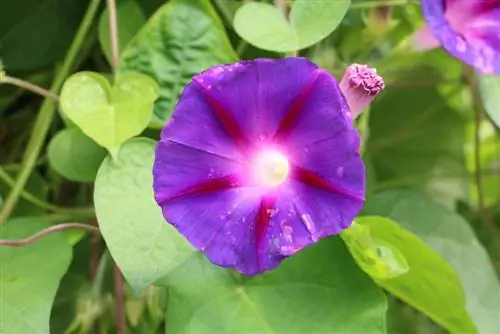
Without regular pruning, ivy, wild vine or other climbing plants can completely overgrow facades or gazebos. It cannot be ruled out that these plants cause significant structural damage. In addition, areas covered with these plants are home to many insects and spiders. If the gardener doesn't necessarily want these roommates in his (her) living space, then pruning is the order of the day. Another reason to cut back these plants is that they can collapse under their own weight. If the plant becomes too heavy and the plaster is a little cracked, this happens despite the strong roots. Tip: Since ivy contains toxins, it is worth wearing gloves when cutting the plant. The optimal time to cut most climbing plants is autumn (from the end of August), the optimal tool - manual hedge trimmers. Fast-growing plants such as ivy or wild vine can also be cut in summer if necessary. The remains of the adhesive roots look rather unattractive but are difficult to remove. Tip 1: A wire brush or spatula combined with a lot of patience will produce the desired result. Flaming also helps, after which the wall should be repainted. Tip 2: For Clematis, you should first determine which cutting group the variety belongs to; this determines whether the plant should be cut annually or less frequently and at what time of year.
Propagation
Ivy is probably the easiest to propagate. Shoots that are not yet woody and have no attached roots are selected. The cut shoots are placed in a container with water in such a way that no leaves protrude into the water. After just one or two weeks, new roots will form. When these are about three cm long, the shoots can be planted. Clematis can be propagated with the help of cuttings that are buried shallowly in potting soil and fixed. Only after the young plant has taken root is the shoot separated from the mother plant. Climbing roses can be easily propagated from cuttings; loose soil and regular watering are important.
Care for climbing plants in brief:
- Planting time in autumn or spring;
- Mostly sunny or partially shaded location (except the ivy);
- Loose humus-rich soil and slow-release fertilizer;
- No waterlogging, fertilize regularly;
- Pruning is particularly necessary for ivy and vines;
- Propagation by cuttings or offshoots.
Climbing plants are a beautiful and easy way to decorate the garden and house in a natural way.
Interesting facts and planting tips
Climbing plants that can grow directly on surfaces such as walls and facades are called self-climbers. Plants that require climbing assistance are called scaffold climbing plants. Climbing plants make an important contribution to greening buildings.
There are some useful plants among the climbing plants. They include grape vines, blackberries, kiwi varieties, beans, peas, cucurbits but also spice and medicinal plants such as pepper, vanilla and schisandra. Among the climbing plants there are climbers, self-climbers, spreading climbers and creepers.
The most famous climbing plants in Germany are:
- Trumpet Flower
- Clematis
- Climbing hydrangeas
- Winter Jasmine
- Wild Wine
- Wisteria
- Ivy
- Whistle Winch
- Clematis
- Climbing roses
Annual climbing plants are mainly used if you want to achieve short-term accents or if you want to try out the effect of such a plant first.
Years ago, many people were of the opinion that climbing plants damaged the walls of houses. Experience confirms the opposite. House facades protected with climbing plants require less repairs because they are not exposed to the constant change of moisture and dryness, high heat and extreme cold.
Climbing plants keep water away from the facade and have a temperature-balancing effect. However, the prerequisite is that a trellis is attached or that the greenery is only applied to a flawless, not cracked or crumbling facade.
Green house walls, however, increasingly attract insects and other small creatures. But they also offer ideal nesting opportunities for songbirds.

